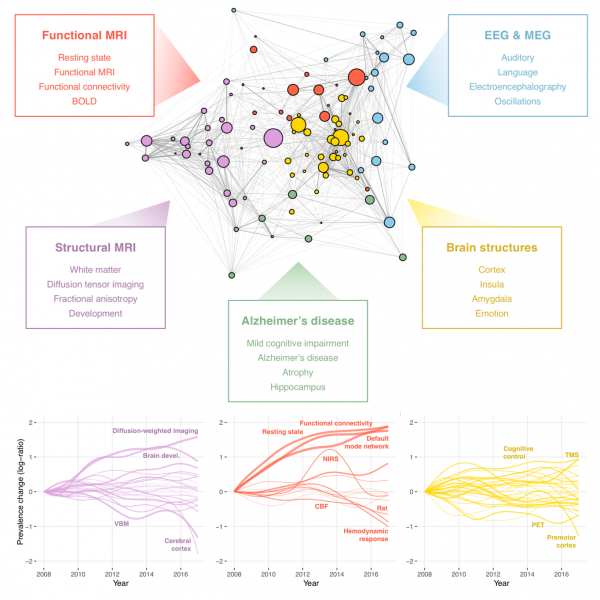
As the field of neuroimaging grows, it can be difficult for scientists within the field to gain and maintain a detailed understanding of its ever-changing landscape. While collaboration and citation networks highlight important contributions within the field, the roles of and relations among specific areas of study can remain quite opaque. Here, we apply techniques from network science to map the landscape of neuroimaging research documented in the journal NeuroImage over the past decade. We create a network in which nodes represent research topics, and edges give the degree to which these topics tend to be covered in tandem. The network displays small-world architecture, with communities characterized by common imaging modalities and medical applications, and with hubs that integrate these distinct subfields. Using node-level analysis, we quantify the structural roles of individual topics within the neuroimaging landscape, and find high levels of clustering within the structural MRI subfield as well as increasing participation among topics related to psychiatry. The overall prevalence of a topic is unrelated to the prevalence of its neighbors, but the degree to which a topic becomes more or less popular over time is strongly related to changes in the prevalence of its neighbors. Finally, we incorporate data from PNAS to investigate whether it serves as a trend-setter for topics’ use within NeuroImage. We find that popularity trends are correlated across the two journals, and that changes in popularity tend to occur earlier within PNAS among growing topics. Broadly, this work presents a cohesive model for understanding the emergent relationships and dynamics of research topics within NeuroImage. Dworkin et al. (2018)